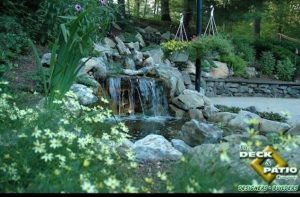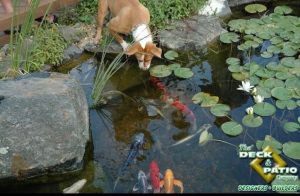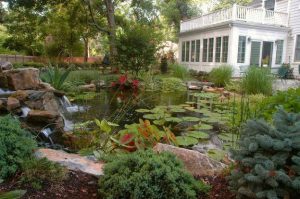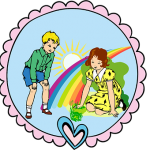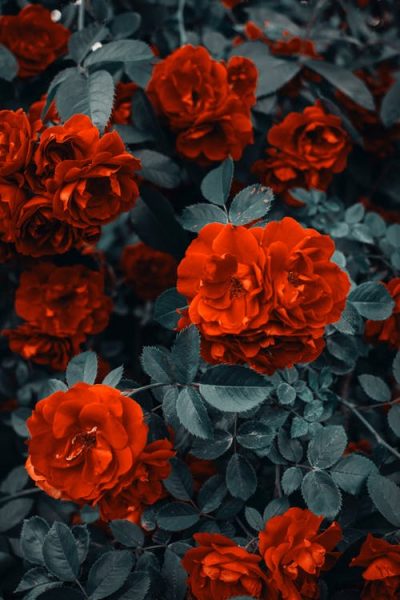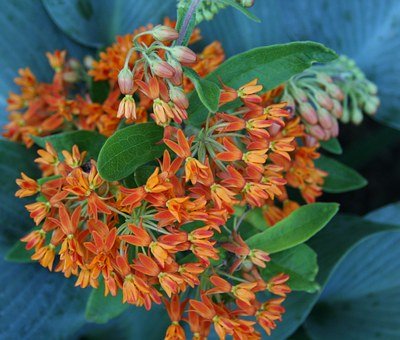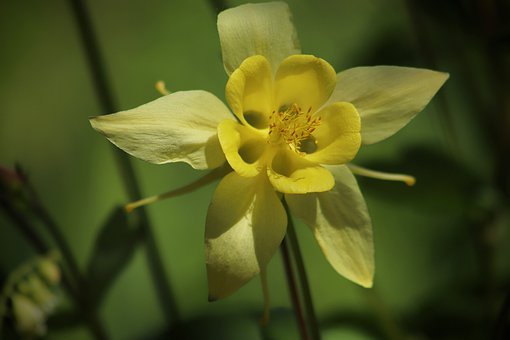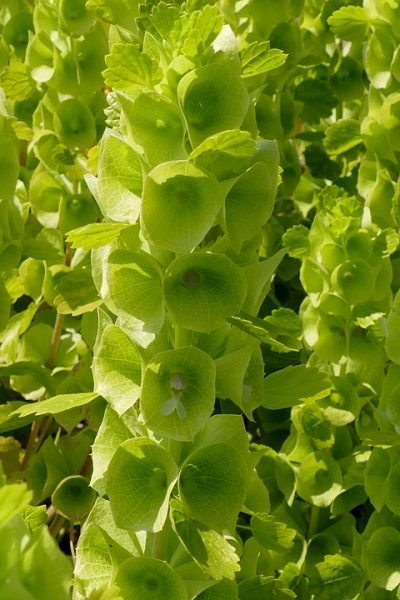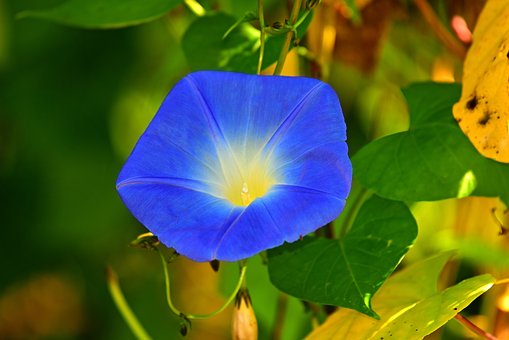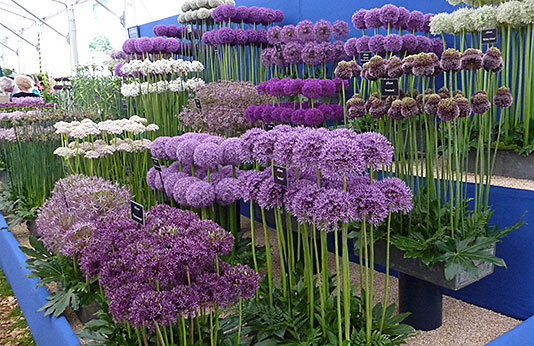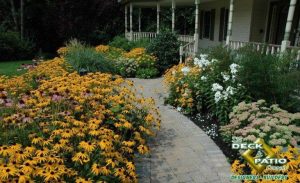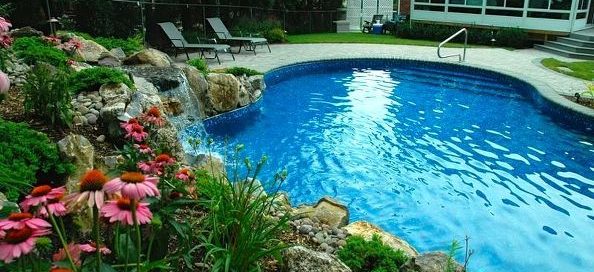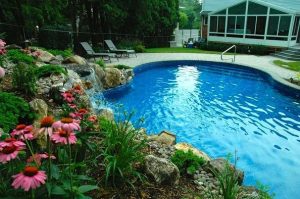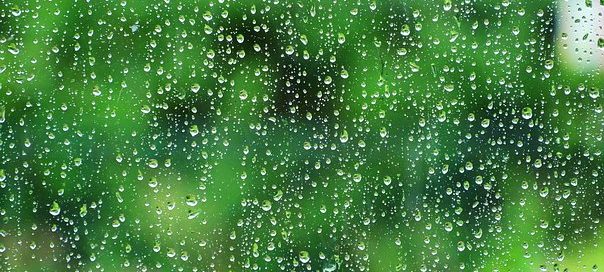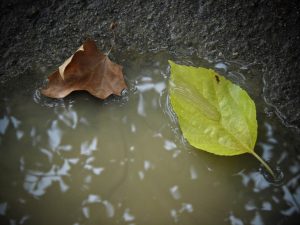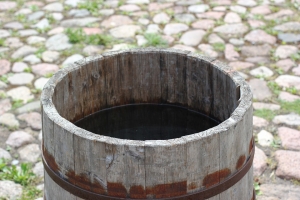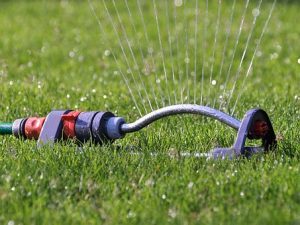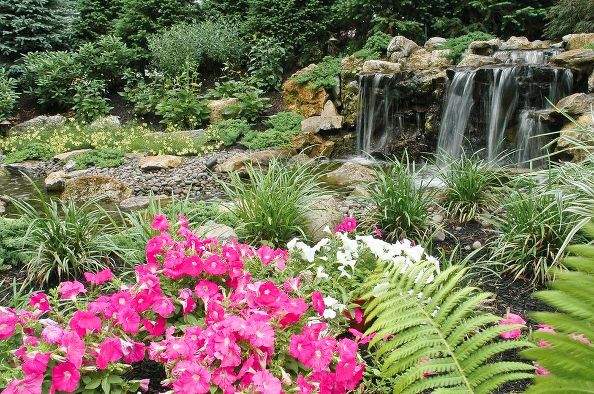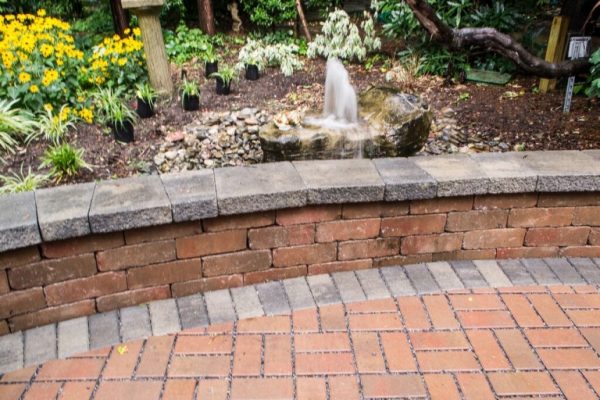A Blissful Pond Will Fit In Any Size Yard
Deck and Patio has designed and built over 300 ponds on Long Island,” says owner Dave Stockwell. “And if there’s one thing we’ve learned, it’s that just about any yard can accommodate some sort of pond.”
“As you’ll see below, it doesn’t matter if your yard is expansive or no bigger than a postage stamp, ponds range in size from small — to double-ponds and even those with vanishing edges.”
Dave adds that no matter the size, the sounds and beauty of a pond waterscape will offer a welcome place of serenity while attracting delightful wildlife such as birds, butterflies, and croaking frogs.
Below is a sampling of the different types and sizes of ponds you can choose. Under the medium-sized category we even have a video of a koi pond we did in Cold Spring Harbor, NY. The video shows the entire pond landscape including under water.
Small Ponds
For these clients, Deck and Patio tucked a small pond and waterfall into the corner of their driveway.
By adding beautiful creeping ground cover and boulders, even the property’s challenging raised grades were turned into benefits.
Also, by installing enough retaining boulders and plant materials, we used Mother Nature’s own gravity to pump water naturally in the pond. The waterfall not only tops off the pond’s water level but aerates or oxygenates it, helping to keep it fresh and healthy.
Sometimes, when very young children are involved, clients worry that a full, deep pond might present safety concerns. In these cases, many of our clients choose a pondless waterfall.
In a pondess waterfall, river rock allows cascading water to seep down into the ground where it is captured in a below-ground reservoir and recirculated.
And, since regular ponds require seasonal maintenance to keep them healthy and beautiful, a pondless waterfall is easier to care for.
Another reason for choosing a pondless waterfall came up with one our water feature clients. Their property abutted parklands, and they feared a pond would attract too many wild animals.
Lastly, budget and property size can be factors. A large space is not needed when you go pondless.
Medium-Sized Ponds
As design and build experts, Deck and Patio always advises installing your pond where you can enjoy it from a deck, patio, bedroom, or kitchen.
It’s important to note that not just humans appreciate a pond water feature. In addition to the family pooch being endlessly fascinated, birds and butterflies will be attracted. Birds, in particular, love gently moving water.
Just provide a place for them to land, such as rock platforms, or design a shallow end as part of the feature. And by keeping the water circulating, this will also help prevent mosquito larvae from hatching. Of course, when koi are involved, you want to avoid fish predators. For more on that, click here.
Larger Ponds
When there is room and a budget for a large pond, like this koi pond with several waterfalls and a stream, a backyard can become a private sanctuary (left).
Note: because ponds do not have too much water action, water lilies are ideal plants, which is especially helpful in larger ponds.
Not only do they produce fragrant flowers that are beautiful, they add shade which helps keep the water temperature down during the heat of summer.
The lower temperature reduces undesirable algae growth; and when koi or other fish are present, water lilies provide great shelter for the fish while keeping the water clear and clean-looking.
A pond can reach its zenith if it’s possible to give it a vanishing edge (right). Although these are more commonly done for pools, if local regulations limit the addition of a pool, a pond might be the answer.
That was the case for this Deck and patio multi-part water feature. It captures the glorious sunsets over Long Island Sound and appears to connect right out to the water’s edge. The project includes a stream, waterfalls, and second lower pond.
Under the feature’s beauty, an extremely high tech and complex natural biological filtration system using Aquascape Inc. products is continuously maintaining the feature’s crystal clear water. To learn more about this pond, click here.


